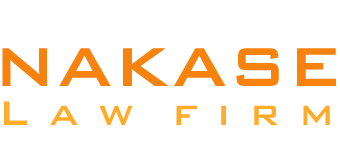What is the role of learning and development in a company?
Employers who take the initiative to help staff members grow their knowledge and abilities create a competent workforce that can overcome obstacles and succeed. For this reason, employee training and development are essential tasks for any business.
If you have any questions about learning and development, make this guide your resource.
The methodical process of improving an employee’s expertise, knowledge, and abilities through learning and development (L&D) leads to improved work performance.
L&D is an essential component of HR and plays a big role in a company’s people development strategy. It is essential for drawing in and keeping talent, enhancing corporate culture, and motivating staff members.
What distinguishes development from learning?
Although they serve different functions, learning and development are crucial for assisting employees in developing and succeeding.
Workplace learning focuses on acquiring skills, expertise, habits, and attitudes that result in better job performance. Learning happens through various activities, including reading books or articles, attending conferences and seminars, and conducting practical experiments.
Development is the process of expanding and deepening one’s expertise in accordance with one’s own long-term career objectives. It strives to develop career-related skills to increase one’s potential for future opportunities.
Stretch assignments, job shadowing, coaching, mentoring, and leadership training are all examples of activities that promote development. Employees usually choose to participate in development rather than being forced to.
What distinguishes training from learning?
Despite the frequent confusion between the terms “training” and “learning,” there are two distinct methodologies in learning and development.
Learning is the process of taking in and remembering knowledge throughout time. It broadens one’s perspective and knowledge base for both current application and future endeavor preparation.
Employees need to master a specific skill or task for a work environment, and this is what training is—a teaching event. It is usually directed towards groups of employees and might happen online, off-site, or on-site. Employee training could cover topics including instructing teams on a new product, improving customer service skills, or using work equipment safely.
Let’s review the usual terminology used in the context of development and learning:
- Learning: The process of gaining information, abilities, or attitudes via instruction, study, or experience. Learning is a component of education, training, and development.
- Training: The goal of training is to impart instantly usable knowledge, abilities, and attitudes for a particular task. Improving performance in the current role or adapting to changes in the future may be the main goals of training.
- Development: Long-term goals are the focus of development. It centers on expanding or strengthening knowledge in a way that advances both the organization’s (future) objectives and the individual’s personal development goals. Most development is voluntary.
- Education: A more formal approach to increasing one’s knowledge is through education. Education is particularly important when a person has minimal expertise in a particular field because it is frequently general and helpful for a long period.
The majority of firms’ leadership decides to fund an L&D program because they recognize the need to enhance workers’ skills and knowledge. This investment yields numerous benefits, such as the following:
Recruiting and keeping talent
Individuals want to work for companies that support their current and future passions. Employees now want career-enhancing development and advancement from their employers. A Gallup poll indicates that 65% of workers base their assessment of a job opportunity on the possibility of receiving employer-sponsored upskilling.
Furthermore, according to a TalentLMS poll, 76% of workers are more inclined to stick with a business that offers continuous learning and development possibilities.
Increasing the experience and engagement of employees
Workers feel more self-assured in their work and motivated to take greater initiative and achieve their professional goals. Increased engagement, job satisfaction, and morale follow from this.
Encouraging DEIB
The majority of organizations prioritize a fair and inclusive work environment, providing opportunities for employees from all backgrounds to advance their careers. The active integration of DEIB into L&D strategies facilitates a creative, engaged workforce and fosters a sense of belonging.
Closing skills gaps
Companies need to stay current with changes in business principles and technology. This entails preparing staff members to take on new tasks. Developing people’s soft skills and reskilling them for specific technical tasks helps the workforce become more adaptable, encourages innovation, and can fulfill the organization’s future labor demands.
Global telecom giant Telefónica, with its headquarters in Spain, was confronted with a skills shortage in key domains such as security, robotization, and analytics. Telefónica pledged to invest in improving the skills of current employees rather than hiring new ones from the outside.
It introduced a program with an app that links to the business’s HR administration system. A chatbot assists employees in building a profile, receiving tailored training suggestions, and matching their abilities to open positions.
95% of workers used the app, which allowed Telefónica to get comprehensive information on workers’ existing skill sets. Using this information, leaders could plan future initiatives, match people with job vacancies, and determine where L&D was needed.
Encouraging future leaders
Offering chances for learning and growth produces knowledgeable and skilled workers ready to take on more responsibility and leadership positions. Many companies design in-house management development programs that provide staff members a concrete opportunity to fulfill their professional goals.
For instance, Sam’s Club, an American retail membership warehouse company, offers a five-week Manager Quality (MQ) course. Its material offers associates at all levels personalized professional development. The company’s leadership expectations are developed over a week of values-based decision-making. Four pillars make up MQ’s framework, which teaches fundamental ideas relevant to every Sam Club job.
Improved employer reputation
Since so many people are seeking career advancement, meeting their aspirations is essential to building your employer brand. Strong learning and development programs provide employers an edge over rivals for top people.
In an industry beset by a labor shortage, the multinational fast food restaurant company McDonald’s provides L&D perks in an effort to draw and keep employees. After ninety days of employment, tuition support is available to even part-time workers. The Archways to Opportunity initiative at McDonald’s offers a range of avenues for staff development and education. Employees can access personalized professional coaching and learning anytime, anywhere, using a career development app.
There isn’t a single learning strategy or method that suits every person or every company. Individuals and organizations differ in their preferred methods of learning.
One well-known method for organizational learning is the 70/20/10 model. It deconstructs the primary mechanisms by which learning occurs:
- Informal, work-based learning accounts for 70% of learning. This occurs when working on new projects, difficult assignments, receiving comments from supervisors, and having “water cooler” chats with colleagues.
- Developmental associations account for 20% of learning. Social learning occurs in the workplace when employees connect with mentors and peers.
- 10% percent of learning is derived from conventional coursework and instruction in an official school environment.
This ratio is not a one-size-fits-all strategy, even though it might be effective for some companies and purposes. For instance, in many situations, no formal education is required for any workplace learning.
In other situations, pursuing a specialized career requires years of formal education in addition to on-the-job training. Formal education will be far more important for these types of positions.
Thankfully, a wide range of L&D delivery strategies are available for enterprises to choose from, mix and match, and customize to meet the unique demands of their workforce and business.
Formal education in a classroom
This approach is goal-oriented, teacher-led, and has little contact between students. It usually involves a group and might happen online or in person. Classes, lectures, and seminars are a few examples.
Informal learning
This type of learning is more self-directed, organic, and unstructured. It happens at work through assignments, reviews, conversations with coworkers, and solitary study. Talks, internet forums, reading books, and conducting research are a few examples.
Experiential learning
Using a trial-and-error methodology, people can attempt a task, see how it turns out, and then learn from it. Apprenticeships, internships, online or off-site simulation activities, and scenario-based role-playing are a few examples.
Coaching
Coaching is a relationship that takes place in the workplace with the aim of enabling staff members to develop and reach their objectives. Regular meetings between the coach and trainee allow for open communication while the coach offers guidance, support, and criticism. Workplace coaching comes in a variety of forms. For example, performance coaching encourages staff members to reach their greatest potential by developing new skills and refining existing ones.
Performance coaching is done very much by hand at Police Now, an independent charity organization that hires police officers in Wales and England. One-on-one coaching is provided as part of its year-long Frontline Leadership Programme to assist participants in completing each training module and filling in any knowledge or skill gaps.
Peer coaching
Peer coaching is the process by which two or more coworkers get together to exchange ideas, pick each other’s brains, develop skills, or work together to solve issues at work.
AI coaching
AI-based coaching makes use of artificial intelligence to either fully handle the coaching task or to supplement it with insights.
Creating a culture of coaching encourages staff members to better themselves and their work in order to contribute to the success of the company. It also fosters a sense of trust and connection.
Mentoring: Mentoring is a cooperative partnership that pairs workers with a mentor who can help them advance their careers. Mentors serve as role models for their mentees. They provide direction, listen, and respond to inquiries. Workplace mentorship examples include:
- The organization sponsors mentoring programs that give mentorship partnerships structure and resources.
- Peer mentoring occurs between two coworkers with varying degrees of expertise but at the same or comparable organizational level. The more seasoned individual imparts information and gives the less seasoned individual support.
- When junior staff members impart their knowledge and experience to their superiors to help them fill a skill gap in a certain area, like digital capabilities, this is known as reverse mentoring.
- Micro-mentoring focuses on short-term goals for a particular project, topic, or skill and takes place in one-time or temporary settings.
- Through job shadowing, workers can watch a more seasoned colleague carry out their responsibilities. Introducing a job shadowing program provides staff members with opportunities to experience other positions and careers.
- Building employees’ skill sets entails assisting them in learning new abilities. The goal is to close the skills gaps inside the company so that it can continue to grow and compete. Customer service role-playing, problem-solving games, and new product training are examples of skill-building exercises.
- Another strategy for filling in skill gaps is targeted training. It blends formal and informal education to address each student’s unique learning needs. By identifying the most critical talents, businesses may allocate training resources effectively. This kind of learning can be accomplished with almost any approach.
Cross-training: This refers to instructing one employee on how to perform the duties of another employee. Employees who receive cross-training broaden their skill set and comprehension of the business’s processes. Additionally, they are able to cover for missing workers and step in when more assistance is required to divide the task.
Remote training: Employees who do not share a physical workspace can participate in online remote training. It can be accessed on demand (asynchronously) or synchronously, with employees participating from various locations at a predetermined time. Webinars, online classes, and pre-recorded video lectures are a few examples.
Training for new hires: This phase of the onboarding process teaches them how to perform and be effective in their roles. It is tailored to each position and may cover software usage, equipment operation, or customer service methods.
How to create a strategy for learning and development
Organizational requirements for learning and development differ, but the cornerstone of each effective L&D program is a thorough approach. You may create a strong learning and development strategy for your company by following the stages stated below:
- Make sure your L&D plan aligns with the business plan.
Knowing the direction of the business is essential to comprehending the L&D requirements of the organization. Before developing an L&D plan, take into account the following:
- The skills and abilities of your workforce and which competencies are essential to advancing business priorities
- What your company offers and its edge over the competition
- What your clients require and the potential evolution of those needs
- Changes that could impact the company include advancements in technology, unstable economies, rivalry, and expansion or contraction of businesses.
- Whether the company is flexible and ready to adjust to both anticipated and unanticipated developments.
- Work alongside industry executives
Engage stakeholders directly in developing the L&D strategy to guarantee that it satisfies the distinct requirements of various departments. To begin, administer questionnaires to acquire a general picture of the organization’s learning needs.
Next, have one-on-one sessions to further your understanding. This will allow you to get specific comments and strengthen support for the learning and development projects. Provide chances for department heads and senior management to actively participate in, support, and model the company’s L&D plans through collaborative input.
- Evaluate staff members’ abilities and pinpoint any skills gaps
Determine the fundamental skills needed for each position in order to support the business objectives of the organization.
Once you realize what you need, you may find out what skills and knowledge are already being used throughout the business by conducting a skills audit. Subsequently, a skills gap analysis will identify possible staff growth opportunities and skills shortages.
You will be able to determine the necessary L&D priorities using this information.
- Create educational agendas
Creating learning journeys is one of the most important tactics for facilitating ongoing learning inside a company. These trips assist people in gaining the abilities and information required for their particular professional roles.
Determine the skills needed for each function and the practical and efficient learning strategies for training and growth.
You can select the learning methods and create the journeys with the assistance of focus groups. Participants should be asked the following questions:
- Which tools are necessary for the work that you can perform?
- What maximizes your productivity?
- Which educational opportunities suit you the best?
- How might you make your educational experience better?
- Arrange for the L&D initiatives to be implemented.
Initiatives for learning and development are implemented in phases. The following protocols can serve as a reference:
- Clearly state the initiative’s goal.
- To decide which learning program is ideal, do a SWOT analysis.
- Create a detailed budget that accounts for all program operating expenses.
- Give thorough details about the ROI and benefits of the program. Explain how they complement the aims and ambitions of the business.
- Use pilot classes as a test run to identify shortcomings and make necessary modifications.
- Monitor output
Monitoring specific data can demonstrate how L&D projects engage staff, which helps justify them. Three indicators can be used to assess the efficacy of your learning and development initiatives:
- The number of employees who enrolled in and finished the training is known as the completion rate.
- The percentage of workers that completed the course and passed the assessment.
- The percentage of workers who did not finish their training is known as the training dropout rate.
- Evaluate performance and make necessary modifications
By thoroughly evaluating the training programs, you can determine their impact beyond the L&D measures. It is crucial to gather trainees’ comments after the training. Make sure you ask them about their general level of satisfaction as well as their likes and dislikes.
You can evaluate the effectiveness and determine what needs to be changed by looking at the following results:
- Did the organization’s priorities and objectives get reinforced by the learning strategies?
- Were deficiencies in skills filled in order to raise worker productivity?
- Has retention, morale, and employee involvement increased?
- Do corporate procedures operate with more efficiency?
- Is there a healthy culture at work?
- Were funds and resources efficiently allocated for L&D?
KPIs for learning and development
You can assess training effectiveness—the extent to which programs achieve their intended goals of improving participants’ knowledge, abilities, and performance—by using specific employee training metrics.
A few examples of measurements are assessment results and pass rates, training ROI, cost of training per employee, and training experience net promoter score.
The impact of a training program on corporate performance needs to be assessed using more strategic indicators. Key performance indicators (KPIs) for L&D can measure how productive the business is and how well it’s accomplishing its goals.
Education and growth KPIs to take into account for this are:
- Rate of employee productivity: The value that workers produce over a certain time period is calculated as follows: (Total output ÷ Total input).
- Growth in revenue: Revenue growth over a predetermined period of time = (Revenue during the current period – Revenue during the previous period) ÷ Previous revenue
- Margin of net profit: Profit margin as a percentage of revenue is calculated as follows: ((Operating income – Expenses – Interest – Taxes) / Revenue) x 100
You can demonstrate the organization’s investment by associating the timing of certain staff learning and development programs with KPI improvements. This makes gaining support from stakeholders to continue and introduce new learning and development initiatives simpler.
How to calculate learning and development ROI
L&D specialists need to be able to articulate the benefits that their projects provide to the company. You can quantifiably show how the business gains from providing training by tracking training ROI.
The purpose of this statistic is not to assess employee satisfaction with a specific training program. Rather, it illustrates the effect that training initiatives have on the organization as a whole. Remember that not all training experiences will correlate with a return on investment. For determining training ROI, programs that have the greatest direct impact—roughly 5% of all programs—should typically be the only ones considered.
Below is a summary of three popular techniques for calculating training return on investment:
- Kirkpatrick model for evaluating training
Four training assessment levels serve as the foundation for this model:
Level 1: Reaction: Using surveys that yield the following information, ascertain the learners’ reactions, responses, and degree of satisfaction.
- Rates of participation
- Rates of completion
- The net promoter score
Level 2: Learning – Evaluate how the knowledge and abilities of the staff have improved by:
- Assessments both before and after training
- Data from performance reviews
- Reviews by peers
Level 3: Conduct – Evaluate any shifts in employee behavior by gauging each worker’s:
- Engagement
- Motivation
- Morale
Level 4: Impact – Use enhanced KPIs, such as the following, to gauge how the training affects the company:
- Productivity in Sales
- Client contentment
- Employee loyalty
- Quality of work
- Training evaluation using the Phillips model
Kirkpatrick’s model is expanded using this way into five stages of training evaluation:
Level 1: Reaction – Gain insight into students’ experiences through surveys, learner reviews, AI technology, etc.
Level 2: Education Assess the degree to which learners have mastered the desired knowledge and abilities in order to gauge how successfully their educational goals have been met. Learner attentiveness and attendance are also taken into consideration.
Level 3: Application – Collect qualitative information from students that sheds light on how they have used the skills they have learned.
Level 4: Impact – Assess the training’s beneficial effects on the company while taking into account any obstacles that may have stood in the way.
Level 5: Return on Investment: Using formulas like a cost-benefit analysis, establish a connection between the training and enhanced company outcomes.
- Impact analysis
This approach is a four-step procedure for conducting impact research to see how a training program influences business modifications. For instance, higher market share, sales, or better customer feedback
Planning for evaluation Identify what indicators are needed to measure impact, such as sales data. Choose which training data, such as price and participation rates, to gather as well.
Data collection: Gather pre- and post-training statistics, as well as data from a range of sources, within predetermined bounds.
Data analysis: Use the ROI calculation to convert the information into a monetary value. ROI equals net return on investment ÷ cost of investment × 100%.
Reporting: To complete the impact research, write a report that includes both qualitative and quantitative data to support the main conclusions.
Important vocabulary in learning and development
The language used in corporate learning and development will change. It is imperative to remain current with the terminology used in learning and development (L&D). The following is a collection of relevant phrases with brief definitions that we have put together:
- The ADDIE model is a flexible framework that may be used to create effective learning experiences in a variety of training settings. The following is the sequence in which the five stages of this instructional design methodology are completed:
- Analyze: Determine which issue has to be resolved.
- Design: Produce a learning intervention prototype and storyboard.
- Develop: Create the training using the prototype or storyboard.
- Implement: Give the instruction.
- Evaluate: Using information from post-training assessments and observations, evaluate the first training program.
- Employee development plan: A plan to enhance a worker’s knowledge and abilities to prepare them for present and future positions is known as an employee development plan. The strategy takes into account the requirements of the company and the employee.
- Leadership development plan: A customized, long-term approach that assists a person in gaining the leadership skills necessary to advance to the position of manager or leader within the company. The ability to acquire and accept new ideas and techniques in order to better adapt to change is known as learning agility. “The ability to learn, unlearn, and relearn” is one way to define it.
- Organizational learning: the act of encouraging and supporting learning within a company in order to give it a competitive edge, increased production, and profitability. Its main objectives are knowledge transfer, retention, and creation.
- Professional development plan: An individual can advance in their career by following the steps outlined in a professional development plan. It entails establishing their desired outcomes, determining their current knowledge and expertise, what they still need to acquire, and the actions necessary to get them there. This is different from an employee development plan in that the individual’s goals are the main focus, rather than necessarily those of the corporation.
- Reskilling: The process of learning new skills or receiving training in an unrelated field or discipline in order to adjust to shifting job requirements or move into a new role. It’s a proactive strategy for organizing the workforce and addressing the need for future skills.
- Skills gap analysis: This is a method used to evaluate how different a workforce’s current capabilities are from what the organization requires and will need in the future. Appropriate learning interventions are designed using the analysis’s findings.
- Talent development: The process of enhancing an employee’s current abilities while also pointing out new possibilities and competences. The objective is to support staff development so they may more effectively support the organization’s efforts to meet its objectives.
- Training evaluation: Examining the results and efficacy of a training program. It comprises determining whether the program achieves its goals and gathering input to better understand it.
- Analysis of training needs: A training needs analysis determines the difference between the workforce’s actual knowledge, skills, and competencies and the intended ones. It identifies which employees require what kind of training and for what purpose. This approach is employed when a company issue seems to be related to a lack of abilities.
- Upskilling: The deliberate process of developing and broadening an employee’s skill set in order to help them perform better in their present role, advance within the company, and adjust to changing demands at work.
Jobs in learning and development
The one sure thing about the state of business today is that things will continue to change. To ensure that their staff members are capable of adapting to and thriving in this climate, many businesses are placing an increasing emphasis on learning and development.
According to 72% of L&D leaders surveyed for LinkedIn Learning’s Workplace Learning Report, their department now plays a more strategic role in the company.
While some businesses outsource L&D work, many larger establishments have internal L&D departments.
There are many different types of employment in the L&D field, and each industry and company has its own set of duties and obligations for these positions. Let’s examine the general responsibilities of three of the most popular L&D positions.
Expert in learning and development
Employee learning programs are designed and managed by learning and development professionals. These professionals could be in charge of all the training programs that a business provides, or they might be experts in teaching particular abilities.
Jobs for an L&D professional could include:
- Collaborating with several departments to determine the need for training
- Collecting information, compiling reports, and analyzing training requirements
- Creating participant materials and training content
- Holding workshops and training sessions while fostering an environment that supports learning.
Excellent verbal and written communication skills, strong organizational abilities, project management expertise, and familiarity with e-learning and learning management systems are among the essential requirements for L&D specialists.
The pay scale for learning and development professionals varies based on the company’s size, expertise, and educational background. A total pay range of $59,000–$89,000 US is displayed on Glassdoor. According to Payscale, a learning and development professional in the US makes, on average, $66,800 per year.
In an interview, candidates for an L&D expert post could be asked the following questions:
- How do you ensure that participant materials and training are useful and relevant?
- Tell me about a moment when you had to design a course on a topic you didn’t know much about.
- Describe the steps you take to evaluate the effectiveness and impact of a training initiative.
Manager of Learning and Development
A learning and development manager manages an organization’s professional development and staff training programs. Encouraging and developing people’s abilities helps them become top talent capable of meeting the company’s business needs.
Tasks performed by L&D managers include:
- Developing educational plans and initiatives that support company goals
- Evaluating and enhancing learning and development initiatives
- Overseeing the L&D budget and settling agreements with outside training suppliers
- Hiring and overseeing L&D employees.
Supervisor of Education and Training
A learning and development manager oversees an organization’s staff training and professional development initiatives. The goal is to help people become top talent who can meet the company’s business needs by supporting and developing their abilities.
Among the duties carried out by L&D managers are:
- Creating educational programs and plans that advance business objectives
- Monitoring the budget for learning and development, hiring and supervising L&D staff, settling contracts with outside training providers, and assessing and improving learning and development projects.
Training expert
After determining an organization’s training and development requirements, training specialists create, adjust, and assess L&D programs. They could act as the training staff’s supervisor or as the training facilitator.
The duties of a training specialist include:
- Determining the need for training through skills gap analysis and stakeholder collaboration
- Developing training curricula and deciding on benchmarks and standards for their assessment
- Putting together lesson plans and teaching resources
- Ensuring that training initiatives support corporate objectives
A bachelor’s degree in a related discipline, prior HR experience, and familiarity with learning theories, training methods, talent management, learning design, online resources, and project management are frequently prerequisites for positions as training experts. It also helps to have excellent presentation and communication abilities.
The typical base salary for a training specialist in the US is $59,980, according to PayScale. The usual US range, according to Salary.com, is $52,563–$65,658.
The following interview questions could be posed to a candidate for the position of training specialist:
- Describe how your education and relevant experience have prepared you for success as a training specialist.
- Explain how you would organize a successful soft skill course on critical thinking.
- Which kind of L&D for employees do you believe should be contracted out?
What skills are needed for learning and development?
A strategic perspective, the business savvy to link learning to organizational goals directly, and some specific expertise are prerequisites for working in learning and development (L&D). It takes a variety of skills for L&D professionals to ensure that the company benefits from their efforts and that they succeed.
Now let’s examine some of the essential competencies that L&D professionals ought to have:
Instructional design skills: Creating effective, efficient learning experiences using learning models and theories. To develop presentations, materials for instruction, evaluations, and interactions that improve learner engagement, L&D professionals can use it to methodically establish the learning objectives and tactics. The ADDIE model, Merrill’s Principles of Instruction, and Bloom’s Taxonomy model are three popular methods for instructional design.
Facilitation skills: To facilitate is to “make (something) easier.” Effectively directing learners through a training program and attaining the desired goals is the focus of L&D facilitation skills. A skilled facilitator will include exercises, games, and dialogues that make the subject matter easy to understand and interesting.
Adult learning: The theory of adult learning recognizes that adults do not acquire knowledge in the same way as children. When learning a new idea, adults would rather know why they need to know it in the first place. Additionally, they learn more effectively when given less guidance and more practical experience. Professionals in learning and development (L&D) are aware of adult learning strategies and employ the right approaches to improve training results.
Experience with learning management systems (LMS): LMSs are online tools that streamline corporate learning and development by automating its administration, delivery, tracking, and reporting. The majority of businesses utilize some kind of LMS because of its effectiveness. L&D specialists need to know how to utilize LMS software efficiently and be at ease using it.
Project management: The process of supervising the creation of anything valuable. Using L&D is the same concept. To keep projects on schedule, L&D professionals need to be able to work together and communicate with a variety of stakeholders, manage documents and resources through several versions, and solve challenging problems.
Trends in learning and development
It is imperative for organizations to consistently change their learning and development initiatives with progressive approaches to align with the dynamic nature of the workplace. According to a recent LinkedIn Workplace Learning Report, there has been a 25% change in the required skill sets in the last six years. It is anticipated that 2027 the percentage will have doubled, continuing this trend.
Organizations may sustain a skilled workforce and preserve competitiveness by adopting contemporary learning and development initiatives trends. The following explains a few of the novel ideas that L&D is headed toward.
- Microeducation
A collection of “bite-sized” learning resources is known as microlearning. Each lasts less than 20 minutes and covers just one subject. It generally comes in the form of games, applications, films, infographics, or infographics with an interactive element like a quiz.
People are used to learning new things quickly thanks to instant access to information their mobile devices provide. This type of learning is well-suited to microlearning, which condenses focused knowledge into brief bursts.
- AI and customization of the educational process
The field of learning and development is well aware that training is not a situation where one size fits all. Personalized learning offers experiences that boost engagement and memory retention by considering the learner’s interests, requirements, and skills.
Digital training techniques like gamification, virtual reality (VR), augmented reality (AR), and simulation can maximize learning for specific jobs and people. According to a PwC study, students in a virtual reality learning environment felt 3.75 times more emotionally linked to the training material than those in a traditional classroom.
Another technique for individualized employee learning is artificial intelligence (AI), which has the following applications:
- Algorithms that examine workers’ performance, preferences, and learning histories to create individualized learning routes.
- Learning programs that, based on the needs of each student, provide more difficult or supportive content.
- Data analysis that can identify learners who are likely to struggle and provide assistance.
- Through individual employee success, learning and development programs can more effectively accomplish learning goals that are advantageous to the organization as a whole.
- Instruction in soft skills
Soft talents are character attributes and actions that are transferable to any role and facilitate interpersonal and collaborative relationships. They are not the same as hard skills, which are typically more technical and tied to a job.
While many qualities are regarded as soft skills, self-direction, communication, problem-solving, adaptability, creativity, and integrity are the ones that employers value the most. Soft skills are becoming more and more in-demand in the workplace since businesses are realizing their importance. Soft skill development, such communication and resilience training, should be incorporated into L&D programs.
- Establishing a culture of ongoing education
Employees today seek out work environments that support their need for learning opportunities so they can improve in both their personal and professional life. According to 86% of respondents in a Ceridian Pulse of Talent analysis that polled 2,000 full-time professionals in North America, learning opportunities offered by employers play a significant role in job satisfaction.
L&D ought to capitalize on this expectation from employees and play a key role in creating a culture of lifelong learning. Employees will appreciate and support coordinated efforts that provide new and creative learning opportunities that enable them to develop. When workers enjoy and recognize the benefits of training, it fosters a culture of learning inside the company.
Adopting a concept at the highest levels of the organization has a major impact on the company’s culture. Uber, a taxi service, food delivery, and cargo transport services firm, is one example of a learning and development strategy in action. Uber’s management was able to model a learning mindset.
Leaders were divided into five-person “coaching pods” to talk about the new behaviors and tactics they were learning and using in their daily work. The 2,000 participants from 16 countries had a 94% satisfaction rate, demonstrating to Uber’s officials the importance of sharing knowledge during this event.
They were developing a learning culture across the entire organization as they improved as coaches and managers.
- Development of digital skills and generative AI
The rapidly growing access to digital resources and generative AI, including ChatGPT, affects the workplace in numerous ways. These new technologies have the power to boost output and fundamentally alter the nature of work in the future.
For example, GitHub provides Co-pilot, an AI tool for creating software. According to its studies, Co-pilot may significantly accelerate the software development process by enabling developers to code 55% faster.
Workers will need a basic awareness of using new tools correctly and fully utilizing their capabilities. As a result, L&D programs need to keep up with the evolution of digital abilities and include instruction on the moral and practical application of AI. Generative AI can acquire and summarize knowledge quickly, making the training design process easier.































